The Buffy and Angel team release one of the most talked-about films of the year, intelligently twisting and subverting several genres at the same time.
[stextbox id=”grey” caption=”Cabin in the Woods (2012)” float=”true” align=”right” width=”200″]
Director: Drew Goddard
Writer(s): Joss Whedon, Drew Goddard
Runtime: 106 minutes
Starring: Kristen Connolly, Chris Hemsworth, Anna Hutchinson, Jesse Williams, Fran Kranz, Richard Jenkins, Bradley Whitford, Amy Acker
Distributor: Lionsgate (US)/Roadshow Films (Australia)
Country: US
Rating: Highly Recommended (?)
[/stextbox]
Drew Goddard may not be a household name, but his writing is probably known to millions of fans around the world. Cutting his teeth on Joss Whedon’s Buffy the Vampire Slayer and Angel, he has also worked extensively with J.J. Abrams on TV’s Lost and the feature film Cloverfield. His feature directorial debut was already one of the most anticipated films when it debuted at the South By Southwest Festival in March this year, thanks largely to it being released under co-writer and producer Whedon’s Mutant Enemy banner. With The Cabin in the Woods, Goddard is destined to solidify his name in the annals of horror history forever.
A group of teenagers decide to spend the weekend at a family cabin in the woods. Athletic Curt (Chris Hemsworth) and his girlfriend Jules (Anna Hutchinson) invite the recently dumped Dana (Kristen Connolly), and the studious Holden (Jesse Williams), along on a trip with the intention of setting them up. As is the way of these things, stoner Marty (Fran Kranz) also tags along for the ride. However, they soon get the sense that not everything is right with the titular cabin. Meanwhile, back in a secret lab, technicians Richard Sitterson (Richard Jenkins), Steve Hadley (Bradley Whitford) and Wendy Lin (Amy Acker) prepare for something rather important.
The Cabin in the Woods follows all of the tropes of a standardly plotted horror film, but to believe that this is the case is to ignore the pedigree of the talent involved. Whedon turned the vampire genre on its head back in 1992 with his film Buffy the Vampire Slayer, before fully subverting it with the series of the same name. The Cabin in the Woods is the logical progression from this tradition, taking back a genre that has descended into exploitation and so-called “torture porn”. Whedon and Goddard don’t ignore the time-honoured traditions of the spam-in-a-cabin genre, last perfected back in 1987’s Evil Dead II, but rather they embrace them all, reminding us that just because a formula is familiar, it doesn’t have to be dumb.
Whedon and Goddard’s dialogue immediately distinguishes their film from the countless genre clones, revealing an intelligence at work behind the otherwise (intentionally) standard plotting of the film. Each of the protagonists consciously pushes against the expected, just as with Wes Craven’s Scream (1996), and this mixture of the familiar and subverted is a source of real joy. While illuminating too much about the plot details would be criminal, each of the characters slowly becomes the archetype that audiences expect them to be in this genre. The filmmakers hint at other directions the film could have taken, dropping in references to everything from The Creature from The Black Lagoon to Hellraiser and Japanese horror, but suggests the inevitability to the fate of its lambs. For this is, after all, a horror story, and the writing duo deftly deliver some real blood-curdling chills to go with the chuckles and cameos from Whedon’s acting alumni.
More than anything, The Cabin in the Woods is a reminder of the importance of story and storytelling in our culture, and to not let tales of mystery and imagination ever slide into the mundane and familiar. Horror is meant to scare and entertain, and not simply be a body count waiting to happen. With this film, Whedon and Goddard dissect not just the horror films of the west, but all brands of horror across the world and through time, suggesting their own power of myth. The film may have just raised the bar as one of the first great horror films of the millennium, and one that will no doubt spawn numerous pale imitations over the next decade.
The Cabin in the Woods was released in the US and UK on 13 April 2012. It will be released in Australia on 12 July 2012 from Roadshow Films.

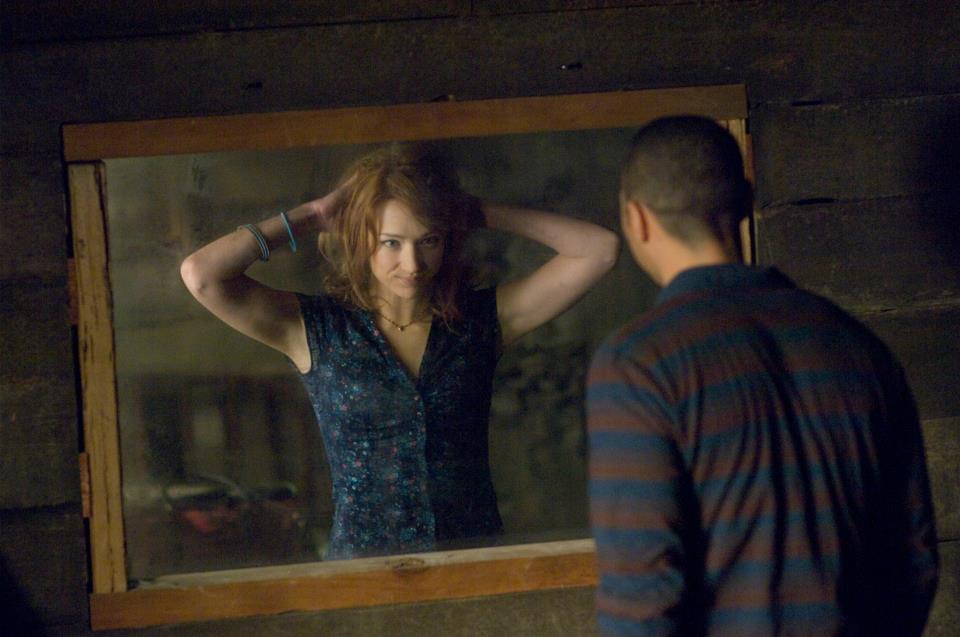
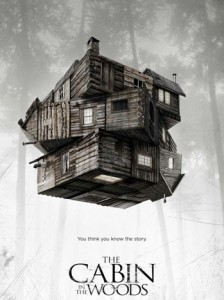
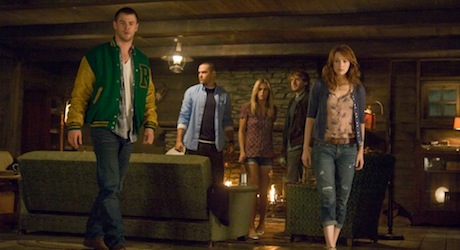
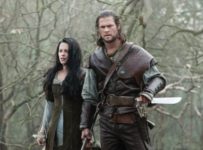
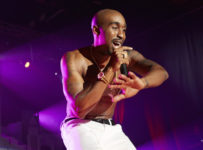
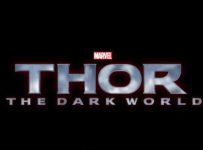
I can’t believe I have to wait until July to see this here. I hate it when other countries get movies so much earlier than we do.